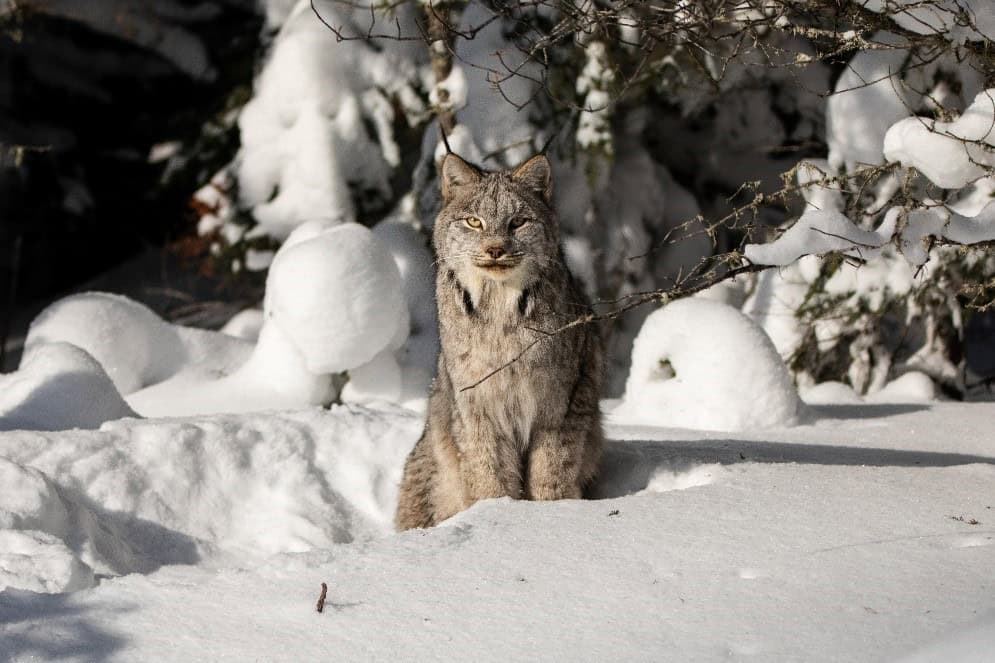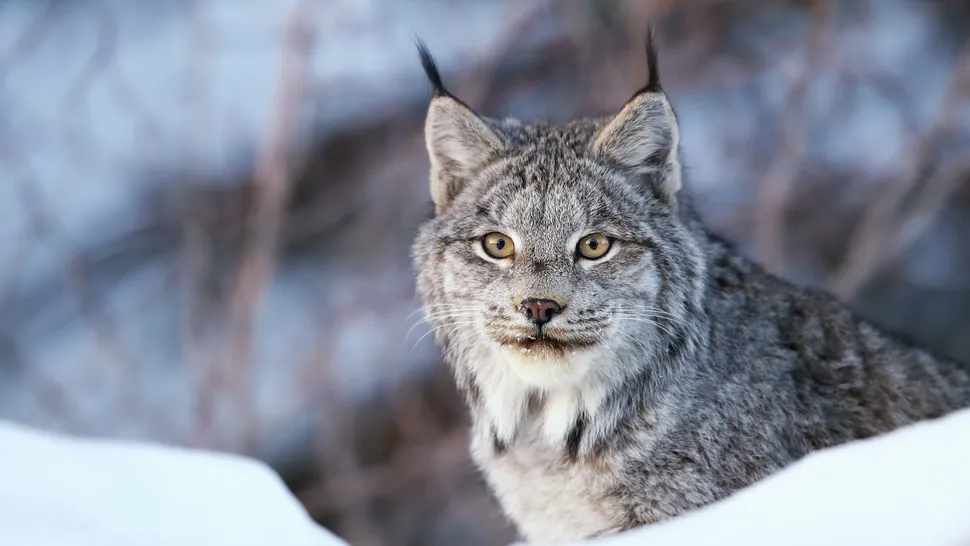A new study by researchers at the University of Alaska Fairbanks’s Institute of Arctic Biology provides compelling evidence that Canada lynx populations in Interior Alaska experience a “traveling population wave” affecting their reproduction, movement and survival.
The findings are published in the journal Proceedings of the National Academy of Sciences.
This discovery could help wildlife managers make better-informed decisions when managing one of the boreal forest’s keystone predators.
A traveling population wave is a common dynamic in biology, in which the number of animals in a habitat grows and shrinks, moving across a region like a ripple.
Alaska’s Canada lynx populations rise and fall in response to the 10- to 12-year boom-and-bust cycle of their primary prey: the snowshoe hare. During these cycles, hares reproduce rapidly, and then their population crashes when food resources become scarce. The lynx population follows this cycle, typically lagging one to two years behind.
The study, which ran from 2018 to 2022, began at the peak of this cycle, according to Derek Arnold, lead investigator. Researchers tracked the reproduction, movement and survival of lynx as the population collapsed.
Between 2018 and 2022, biologists live-trapped 143 lynx across five national wildlife refuges in Interior Alaska—Tetlin, Yukon Flats, Kanuti and Koyukuk—as well as Gates of the Arctic National Park. The lynx were outfitted with GPS collars, allowing satellites to track their movements across the landscape and yielding an unprecedented body of data.
Arnold explained that lynx responded to the collapse of the snowshoe hare population in three distinct stages, with changes originating in the east and moving westward—clear evidence of a traveling population wave.
- Reproduction decline: The first response was a sharp decline in reproduction. At the height of the cycle, when the study began, Arnold said researchers sometimes found as many as eight kittens in a single den. However, reproduction in the easternmost study site ceased first, and by the end of the study, it had dropped to zero across all study areas.
- Increased dispersal: After reproduction fell, lynx began to disperse, moving out of their original territories in search of better conditions. They traveled in all directions. “We thought there would be natural barriers to their movement, like the Brooks Range or Denali. But they chugged right across mountain ranges and swam across rivers,” Arnold said. “That was shocking to us.” One lynx traveled nearly 1,000 miles to the Alberta border.
- Survival decline: In the final stage, survival rates dropped. While lynx dispersed in all directions, those that traveled eastward—against the wave—had significantly higher mortality rates than those that moved westward or stayed within their original territories.
Arnold said the study’s findings won’t sound surprising to anyone with real-life experience observing lynx and hares. “People like trappers have observed this pattern anecdotally for a long, long time. The data just provides evidence to support it and helps us see the big picture,” he said.
“We’ve long known that hares and lynx operate on a 10- to 12-year cycle, but we didn’t fully understand how it played out across the landscape,” Arnold said. “It wasn’t clear if the cycle occurred simultaneously across the state or if it happened in isolated areas at different times.
“Knowing that the wave usually sweeps from east to west makes lynx population trends more predictable,” he said. “It will be easier for wildlife managers to make informed decisions now that we can predict how a population is going to behave on a more local scale, instead of just looking at the state as a whole.”
Another key takeaway is the importance of maintaining refuge populations. “The lynx that disperse during population declines don’t usually survive. Most of them don’t make it when they leave their home areas,” Arnold said.
Other UAF authors include Greg Breed, Shawn Crimmins and Knut Kielland.
Citations:
Derek A. Arnold et al, Evidence for a survival-driven traveling wave in a keystone boreal predator population, Proceedings of the National Academy of Sciences (2024). DOI: 10.1073/pnas.2414052121 – Journal information: Proceedings of the National Academy of Sciences
This article by Kristin Summerlin, University of Alaska Fairbanks was first published by Phys.org on 30 September 2024. Lead Image: Derek Arnold, researcher at the University of Alaska Fairbanks Institute of Arctic Biology, carries a male lynx weighing around 24 pounds. It was captured in a log box trap near Stuver Cabin on the Tetlin National Wildlife Refuge in 2017. The lynx, in excellent condition during a population peak, was anesthetized and collared. After its release, the lynx dispersed eastward toward southern Yukon Territory. The log box trap used for its capture is visible in the background. Credit: Derek Arnold.
What you can do
Help to save wildlife by donating as little as $1 – It only takes a minute.







Leave a Reply